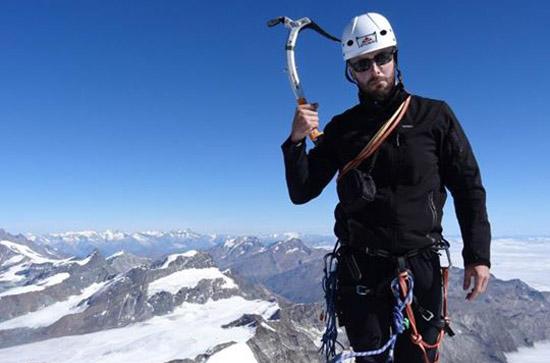Dr. Mark Whale

I joined the NUIM Physics with Astrophysics BSc course in 2001. This was the first time this exciting new course had been rolled out by NUIM, and I was thrilled to be a part of it with my fellow classmates. We felt very well catered for by the lecturing staff, being as interested in the subject matter as they were, and were and still are making significant contributions to the field. I still keep all my lectures notes, as I have had had plenty of call in my life since to utilize them; both for personal revision as well as providing my own lectures. During the course of my degree I was lucky enough to have the opportunity to work as a Summer Intern with the Experimental Physics Department during 2004 and 2005. During these internships I participated, along with other interns, in several on-going projects related to both education and research, including the deployment of the SRT (Small Radio Telescope), specifically developed by the MIT Haystack Observatory for undergraduate astronomy at the 21 cm line.
I completed my Physics with Astrophysics BSc with Honours in 2005, and was accepted into the Ph.D. program under the supervision of Dr. Neil Trappe. Throughout the next 4 years I developed myself as a researcher under the careful and considerate eye of Neil, and gained experience working on submillimetre optical systems both in the NUIM Experimental Physics laboratory and in international institutions such as the Group for Advanced Receiver Development (GARD), Chalmers University of Technology, Gothenburg, Sweden and the Space Research Organisation of the Netherlands (SRON), Gröningen, Netherlands. Additionally, I attained a certificate in Teaching and Learning, adding a strong feather to my cap, and gained significant experience in lecturing and tutoring.
Upon completion of my Ph.D. thesis, I began working as a postdoctoral researcher at the Institue for Applied Physics (IAP), University of Bern, Switzerland under supervision of Dr. Axel Murk. During the next three years, I worked on the optical design, development, and verification of a focal plane array system for the STEAMR project.
During this project, I maintained my ties with NUIM, even collaborating with Prof. Anthony Murphy on some important aspects of the optical design for the antenna. Furthermore, I was able to collaborate with two NUIM alumni: Dan Larman, who was studying for his own Ph.D. in Submillimetre Optics, and Niall Ryan, who was working on his Ph.D. in atmospheric radiometry at the University of Toronto and had completed his BSc at NUIM. I was also able to teach Submm Optics and related topics as part of the IAP Graduate Course. I also picked up German, and became fairly conversational in the language, though my accent is a tad funny, being that the German isn’t strictly “Hoch” down there!
With the contract for this project completed, I relocated to Gothenburg, Sweden, where I continued to work on the development of the STEAMR project, now under its new guise as a collaborative effort between the space agencies of Sweden and Canada. During this second postdoctoral position, I worked on several other projects, ranging from the Atacama Large Millimetre Array (ALMA), the Atacama Pathfinder Experiment (APEX) and the Square Kilometre Array (SKA). I re-connected with my old colleagues, and was able to develop some collaborative projects between NUIM, Chalmers and the Onsala Space Observatory.
As of November 2014, I have relocated to the Antenna Systems division of Ericsson AB, Gothenburg, where I work as a consultant Antenna Systems Design Developer. My main area of work here is on antenna systems for 5G. For another feather in the cap, I’m working on speaking Swedish, which is not as accessible as German, as you can no doubt imagine.
As you can see, in a relatively short space of time I have been very fortunate to have worked in many exciting places with many interesting people. My first contact with the NUIM Experimental Physics Department was at an information seminar on the new courses proposed for 2001 (one of which was Physics with Astrophysics), where I still remember meeting Grainne Roche and Anthony Murphy, who were full of encouragement. I never could have guessed that my life would have taken the path that it did, and I owe a lot to everyone at NUIM Experimental Physics – without them I would not be here, doing what I love.
